Magic: The Gathering will be celebrating its 30th anniversary starting in October, with a major event in Las Vegas and a host of new additions throughout late 2022 and 2023.
To celebrate this historic milestone, Cards Realm will be carrying out within the next month a compilation with thirty important elements of the most famous card game in the world.
Today, I bring you the thirty most impactful sets of each year, starting with 2022 and going all the way down to 1993.
Magic's Most Important Set on Each Year
2022 - Kamigawa: Neon Dynasty

While I'm wary of putting Kamigawa: Neon Dynasty as the most important set of the year ahead to the release of The Brothers' War, it's unavoidable to disregard that a return to one of Magic's most beloved but least mechanically relevant planes was a huge success.
Neon Dynasty has been at the forefront of previous sets, and has a far more exciting visual design and mechanics than any other in 2022 up to this point. The cyberpunk theme fit very well with the plane's proposal, its lore continued the New Phyrexia cycle, and countless cards impacted constructed formats.

Many of its cards have become multiple format-staples, and some are even pillars of some of the main competitive strategies today and if we look at the current Standard, several archetypes are based on some cards from that release, such as Invoke Despair.
2021 - Modern Horizons II
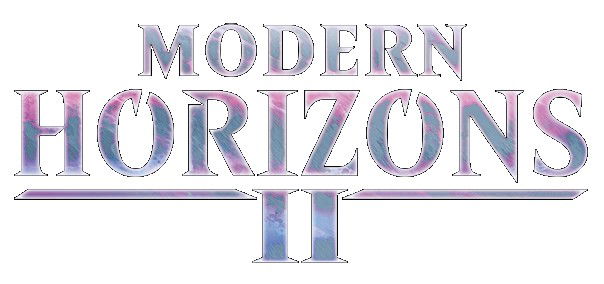
No other set in 2021 has been as powerful and controversial as Modern Horizons II - a release focused exclusively on eternal formats and consequently having a much higher Power Level cap and forever changing Modern, Pauper and Legacy.

Starting with the commons, Chatterstorm and Sojourner's Companion alongside the Bridges polarized Pauper's competitive Metagame and led to a streak of bans that may have indirectly led to the creation of an official committee for the format. , the Pauper Format Panel.
However, where things really changed were in Modern and Legacy, starring essentially the same cards:

Dragon's Rage Channeler was perhaps the most impactful creature released in 2021, taking the crown from Delver of Secrets in Legacy, and transforming the archetype into a true threat alongside Murktide Regent and Ragavan, Nimble Pilferer, which was eventually banned from the format.
Urza's Saga enabled a dozen different archetypes in both Modern and Legacy, where several artifact-oriented decks received a great boost to have their space in tournaments.

If you look at Modern, the biggest impact on the competitive landscape — aside from the inclusion of staples like Counterspell — are the Evoke Elementals, powerful creatures that can be cast for free by exiling a card, and the presence of that cycle in Modern basically turned the format into a "Legacy-lite".
Modern Horizons II also brought a number of other cards that enabled multiple archetypes in their target format, such as Archon of Cruelty, Shardless Agent, Esper Sentinel, among others. So, due to its very high-power level that changed the game forever, it is the most important set of 2021.
2020 - Ikoria: Lair of Behemoths

Ikoria: Lair of Behemoths didn't have the same hype and commercial success as Kamigawa: Neon Dynasty and it didn't even bring a superpower level boost like Modern Horizons II, but it was definitely the most important release of 2020 for bringing two things that changed Magic forever: Triomes and Companions.

The Triomes cycle, lands that enter tapped, but which have three basic land types and therefore can be searched by fetch lands, were the centerpiece of improving Modern's manabase, where Four-Color Goodstuff and even five-color decks have become more viable thanks to the interaction between these lands.

However, Ikoria's true and permanent impact on the Magic universe was due to a mechanic that always allowed players to have an eighth card in hand: Companion.
It was created based on the idea that you had a creature represented as your companion during games, and to access them, you had to make some deckbuilding concessions. However, two problems made it so powerful that it needed errata.
First, the concessions required by them weren't punitive enough, and even helped certain archetypes to develop better: Lurrus of the Dream-Den basically became ubiquitous in any aggressive archetype because it favored cost efficiency, while Yorion, Sky Nomad motivated players to try 60+ card builds when they discovered that if all you do in the game is an irreversible value bomb, having 20 more cards in exchange for 4/5 Flying that blinks all your permanents is definitely worth it.
Second, casting Companions from outside the game — leaving no room for any interaction outside of counterspells — made them too powerful, forcing Wizards to errata the mechanics, by making players pay three mana to place the Companion on their hand before casting them.

Even with that restriction, Lurrus of the Dream-Den was too powerful in basically every eternal format where it was legal, being currently banned in Pioneer, Modern and Legacy, as well as being the first card in years to be banned from Vintage for power level concerns.
2019 - War of the Spark

2019 was a year full of crucial releases for Magic: Throne of Eldraine was the most controversial for the banning of Oko, Thief of Crowns and Once Upon a Time in various formats, in addition to several other bans in Standard. Modern Horizons was the first product dedicated to inserting cards into Modern without having to go through Standard, but in historical terms, none of them surpassed the power of marketing and hype generated with War of the Spark.
The trailer for the set that would culminate in the epilogue of the Nicol Bolas arc was one of the best marketing executions Wizards has ever done for the game — and an art that, sadly, seems to have been lost over the next few years: the soundtrack with a melancholic cover of Linkin Park's In The End* fit perfectly with the atmosphere the trailer was trying to convey, generating a huge hype before its release.

Despite the lore that disappointed fans, War of the Spark brought several impactful cards and spells that are still present in the competitive landscape. Its biggest innovation was the passive abilities in Planeswalkers, which made them even more impactful, and the highlight in this regard were Teferi, Time Raveler which to this day is a staple on Modern and Legacy and is banned on Pioneer, and Karn, the Great Creator, who stars in a number of archetypes today.
Mainly because of how well its publicity was executed with a trailer that moved fans, War of the Spark, despite not having as high a power level as other sets this year, was the highlight of 2019.
2018 - Dominaria

Dominaria was the most important set in 2018 for a variety of reasons: no other release that year was as exciting as it was, as the Ixalan block wasn't impactful enough, the Master sets didn't bring anything beyond expected and Guilds of Ravnica felt a little more of the same.
Additionally, the set was the first return to the plane since Time Spiral, and it gave players a broad view of everything that followed our last visit, while bringing new versions of classic characters like Squee, Jhoira, Multani, Karn, Jaya, Teferi, among others.

Dominaria also first introduced Sagas, enchantments that would become a recurring element in future releases, as well as a variety of cards that directly cared about legendary spells.

And looking at the competitive side, the biggest highlight was Teferi, Hero of Dominaria, a Planeswalker so powerful that it dethroned the long-banned Jace, the Mind Sculptor as the best Planeswalker for Control decks in Modern, and is still a staple there and at Pioneer.
Also, despite not being as good as it once was, Goblin Chainwhirler basically dictated Standard throughout its existence, defining what was and wasn't viable in the Metagame at the time.
2017 - Aether Revolt
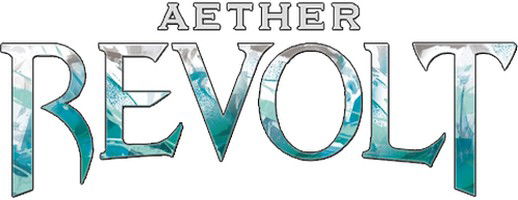
At first glance, none of the 2017 releases seem too impactful because basically all the sets were average, and probably the most well-known product of that year were the Commander 2017 decks, which featured some of the best tribal commanders ever released. However, Aether Revolt has a permanent historical impact.

The set that continued the Kaladesh block featured some of the biggest controversies in the game and led to cards being banned from competitive formats, starting with the emergency ban on Felidar Guardian due to its combo with Saheeli Rai that dominated the Standard at the time.
Another highlight was Rogue Refiner, which essentially solidified Energy decks as a viable option in the competitive Metagame and was present in a broad and detailed ban for Standard in 2018, alongside Attune with Aether.
Finally, Walking Ballista was banned from Pioneer many years later for its combination with Heliod, Sun-Crowned which allowed infinite damage, and Heliod Company is a viable deck in Modern.

But Aether Revolt's most relevant card and one that definitely left its permanent mark was Fatal Push — a cheap, low-cost removal that reinvented the eternal formats as a response to numerous threats that saw play at the time, and helped to shape up the Death's Shadow decks that would dominate Modern that year.
2016 - Oath of the Gatewatch

2016 saw some interesting releases with a return to Zendikar at the end of the previous year and a new set in Innistrad afterwards, as well as Eternal Masters, which brought some of the first major reprints to Legacy.
But Oath of the Gatewatch left its mark on history not only for supposedly ending two Eldrazi Titans and starting the Gatewatch cycle, but also for being the cause of one of the most fateful moments in the competitive landscape: the Eldrazi Winter.

Seeking an innovative way to represent these extradimensional creatures, R&D decided to create a specific symbol for colorless mana to limit the use of certain spells or abilities in multicolored archetypes— which were abundant at the time because of the mix between Fetch Lands and Tango Lands — and while that worked for Standard, the same can't be said for the eternal formats where Eye of Ugin and Eldrazi Temple existed and basically reduced the mana requirement of creatures that already did a lot for their normal cost.
The result was a Modern taken over for a few months in what became known as Eldrazi Winter, where the format largely evolved around figuring out the best variant for the tribe, while the rest of the Metagame struggled to keep up with their speed — eventually leading to Eye of Ugin's ban.
2015 - Dragons of Tarkir

Dragons of Tarkir, the final set of one of the most powerful blocks of all time, may not have the same impact that Khans did, but it has brought some of Magic's most important staples to date, such as Kolaghan's Command, Atarka's Command and Collected Company, which are featured in some of Pioneer's top competitors in 2022.

In addition, its insertion into Standard brought a variety of staples that would become the basis for several important archetypes. Especially with the Den Protector and Deathmist Raptor package as a resilient engine, plus the dragon-focused cards with Silumgar's Scorn, Dragon's Fire and Foul-Tongue Invocation that put the archetype in the spotlight, especially in the Rakdos versions with Thunderbreak Regent and Esper with Dragonlord Ojutai.
2014 - Khans of Tarkir

Absolutely nothing in 2014 compared to Khans of Tarkir — the set was barely out, and it was already dictating how Standard should behave.

It was powerful from start to finish: the commons mattered, the uncommons were at a power level of rares, and the rares were mighty game-winning machines.
Siege Rhino basically became the mainstay of Standard and one of the most loved and hated cards of its era, while it was present in Modern as well, just like Monastery Swiftspear which to this day is a staple of Red-Based Aggro in every eternal format.

In addition, the set also saw the return of one of the most broken keywords in the game's history: Delve, and as expected, some of its cards simply broke the symmetry and balance of the Metagame in Modern, Legacy and Pauper by rewarding too much Tempo decks with Treasure Cruise and combos with Dig Through Time — eventually both spells were banned from eternal formats.

However, Khans of Tarkir's real standout and permanent historical impact came with the reprint of the Allied Fetch Lands, which not only merged with Zendikar's enemy Fetchs in Modern, but also altered Standard to the point where they influenced the deckbuilding that eventually led, alongside the Tango Lands, to several variants of three-color archetypes with a slight splash, as well as a significant increase in the format's price tag.
Finally, it was with Khans of Tarkir that we started naming enemy color combinations based on the plane's clans: Abzan, Mardu, Jeskai, Temur and Sultai.
2013 - Modern Masters

It might seem strange to have a reprint set as the most impactful of a year, but Modern Masters was the first Master set in history and started a precedent that would greatly help Modern and other formats' community acquire the cards they needed — adding punctual reprints on a Booster set.

Focused exclusively on cards from 8th Edition up to Shards of Alara, Modern Masters brought a variety of reprints to make it easier to acquire staples that didn't fit mechanically or in power level with recent Standard releases, such as Tarmogoyf or Dark Confidant.
The insertion of this product, despite being more expensive than a common release, helped to create a pattern that would collaborate in popularizing Modern and create opportunity for players to acquire important cards and hold the spikes that the format created.
2012 - Return to Ravnica

Still in the same logic of making Modern staples more accessible, Return to Ravnica brought the first reprint for Shock Lands, originally released in 2005, and also stood out as the first sets to revisit a plane that wasn't Dominaria.

The inclusion of Shock Lands, with that year's Core Set featuring Check Lands and Farseek basically defined how the archetypes of that format would play, highlighting three-color lists due to the added consistency provided by the new set.

But not only from Shock Lands it lived: cards like Sphinx's Revelation and Detention Sphere became Standard staples, and also appeared in Modern, as well as Loxodon Smiter as an efficient answer against Liliana of the Veil, and Abrupt Decay was, for nearly a decade, one of the most important spells in Legacy.

And speaking of eternal formats, it's impossible to deny the impact that Deathrite Shaman has had on Modern and Legacy — it has become the mainstay of a format geared towards Fetch Lands and mana efficiency, being almost mandatory in many archetypes and often worth the splash cost as it fixed mana by itself. Being often seen as a "one-mana Planeswalker".
Eventually, Deathrite Shaman was banned from Modern for making Jund too fast and consistent, and later from Legacy for being too present and making effects like Wasteland against multicolored decks less punishing.
2011 - New Phyrexia
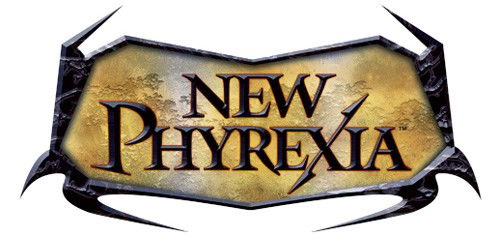
2011 had two important sets with long-term impact for Magic: Innistrad, which brought several staples such as Delver of Secrets, Liliana of the Veil, Snapcaster Mage, among others, and New Phyrexia, which brought a smaller variety of staples, but had a much bigger impact on the game by featuring one of the most broken mechanics in the game's history: Phyrexian Mana.

Phyrexian Mana essentially desecrated two fundamentals of the game: color pie and costs — allowing any deck to have access to spells outside its color, as long as it pays an alternate cost.

The main pivot of this set was Mental Misstep — which was automatically added to the maindeck of virtually all Legacy decks — even Goblins — for allowing any archetype to respond efficiently to the format's one-drops.
Gitaxian Probe was another card that, despite staying for a long time in eternal formats, had a significant change in them to the point where it was banned from Modern, Legacy and Pauper for giving out too much information at no relevant cost.

That said, the color pie break provided by Phyrexian Mana impacts eternal formats to this day, with several spells being used occasionally in Modern, while Mutagenic Growth, Apostle's Blessing and Gut Shot are important for Pauper's repertoire.

But not only of Phyrexian Mana lived New Phyrexia, and other powerful cards define or have defined the Metagame as well, such as Karn Liberated on Tron, Batterskull alongside Stoneforge Mystic, as well as Deceiver Exarch which led to the banning of Splinter Twin in Modern, and the also banned Birthing Pod.
2010 - Worldwake

Worldwake left its mark thanks to the release of two cards that would star in a moment that, until then, was rare in Standard.

Stoneforge Mystic and Jace, the Mind Sculptor were banned from Standard the following year for being the centerpiece of a deck that dominated the Metagame, breaking a tradition of avoiding bans in rotating formats, and perhaps it would be the first precedent that would make direct interventions in Standard a common practice in a few years later.
Interestingly, while Stoneforge Mystic really needed support to be worthwhile, and it didn't exist properly at the time — Caw-Blade only became an issue when they released Sword of Feast and Famine in Mirrodin Besieged — Jace, the Mind Sculptor was criticized upon its release and seen as "weak", with one of the most common complaints referring to the fact that his Brainstorm wasn't a +1 ability.
These players were proven wrong when Shards of Alara rotated, and the Metagame became so geared towards Jace, the Mind Sculptor that players commonly ran copies of Jace Beleren to fight him with an old rule where there could only be one Planeswalker of each type on the battlefield.

Worldwake also brought the manlands cycle, which despite not being widely played today, were Modern staples for several years, in addition to being in this set that one of the best creatures of all time - and that would be properly valued years later - was released:

2009 - Zendikar

Zendikar changed the structure of the game and mainly dictated the eternal formats by bringing, after many years, the enemy Fetch Lands.

The creation of this cycle forever changed Legacy, significantly improving the consistency of decks with enemy color combinations such as BUG Threshold, Canadian Thresh, and also helped — with later additions — to establish other strategies on these color combinations. , such as Dark Horizons and Depths.

Zendikar also brought in some spells that would become staples, like Vampire Hexmage due to its combo with Dark Depths. Other notable cards were Goblin Guide, which for years and even today is still an essential piece for Burn, and Expedition Map, which appears occasionally in Modern and Legacy and has already been banned from Pauper for a time.
2008 - Shards of Alara

2008 had good releases within the Lorwyn block, but in a historical context — while it doesn't have as many important cards — Shards of Alara set a precedent that would become a commercial standard from that moment on.

The first mostly multicolored block set focused on the five separate planes that make up Alara left its mark in history as the first set with a new rarity in the game: the Mythic Rares, with the orange symbol and seeking to portray cards that were important to history, Planeswalkers, or powerful spells.
The set was also responsible for naming the three-color combinations allied with names we still use today: Bant, Esper, Grixis, Jund and Naya.

Alara also brought two cards that would star in a historic moment in professional Magic in the hands of Gabriel Nassif:
2007 - Lorwyn
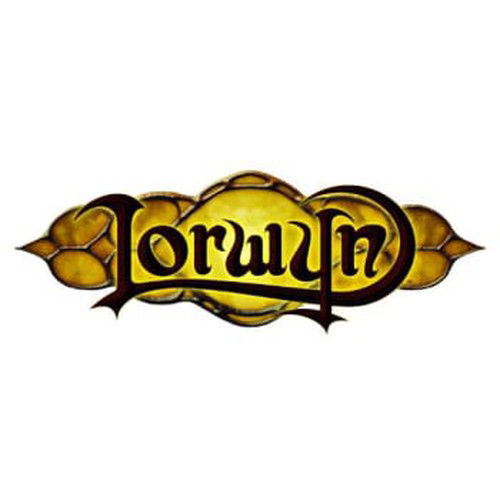
Future Sight may have brought Tarmogoyf and some other cards that made history, but Lorwyn went well beyond bringing not only staples that are still some of the best cards in their categories, in addition to introducing the Planeswalkers.

Having one for each color and with abilities typical of their identity, the early Planeswalkers weren't directly connected to the plane's history, but they were vital to the competitive landscape back then.

Introducing the Tribal supertype, Lorwyn was a set entirely focused on synergies between creature types. With that, Elves, Merfolks and Goblins were some of the most prominent tribes at the time.

The set also had some cards that marked the game's history: Thoughtseize is still a staple for Pioneer and Modern, Cryptic Command has always been a solid choice for Control decks. Spellstutter Sprite, in addition to starring in one of the most powerful decks of the time - UB Faeries - is a Pauper MVP, and Ponder is one of the best cantrips ever released in history.
2006 - Time Spiral
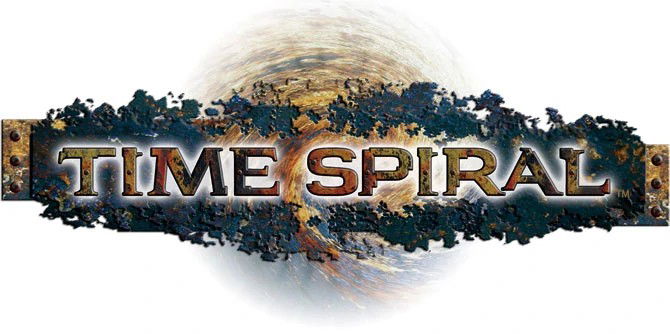
Time Spiral was the first return to Dominaria after many years visiting other planes, and one where we observed a crisis that would unfold over the course of the block and change the lore forever with the Mending.

As a set that sought to reuse a little bit of each mechanic of the sets set in Dominaria, Time Spiral brought a huge variety of high-impact spells that added a lot to the historical context of the game, with some still present in the competitive scenario, such as Dread Return in All Spells and Living End as an archetype of its own, Academy Ruins as a Commander staple, among others.
2005 - Ravnica: City of Guilds
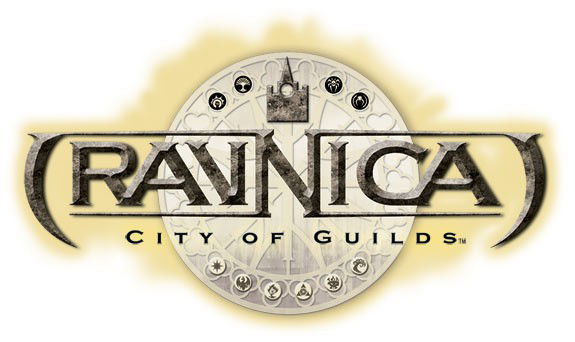
Ravnica: City of Guilds changed a variety of things in Magic — for the first time, we had nomenclature for the two-color combinations we still use today, it introduced a new theme for a multicolored set, introduced hybrid-cost spells, and brought what is perhaps the second most important land cycle in the game's history: the Shock Lands

Despite being basically an adapted version with a drawback of the Dual Lands, the Shock Lands have a greater historical impact due to their recurring reprints every time we return to Ravnica since then, making them legal in more Competitive formats, such as Pioneer, while being a centerpiece whenever it was present in Standard.

Another gigantic standout card in Ravnica's first set was Dark Confidant, which eventually became a Legacy staple for nearly a decade, while it was in Modern for years until power creep eventually made it less mandatory on competitive lists.
2004 - Darksteel

While Mirrodin was the set that introduced one of the most broken keywords of all time - Affinity - it was Darksteel who took the block's power level into the stratosphere by introducing a dozen powerful cards, in particular one that would be promptly banned almost everywhere.

Skullclamp was so impactful in the game and ironically only made so strong by a last-minute change made to weaken it by changing the +1/+1 to +1/-1, making this artifact the most powerful draw engine ever.

Darksteel also brought Arcbound Ravager, which would further leverage Affinity at the time, in addition to other staples present in eternal formats, such as Sword of Fire and Ice, which today is combined with Stoneforge Mystic, Aether Vial as a centerpiece of various creature-based strategies, and Echoing Truth, a sideboard staple for Pauper.
2003 - Mirrodin

Mirrodin left a permanent mark on history by showing that Wizards end up making mistakes when they focus too much on artifacts in their launches, introducing one of the most broken keywords of all time: Affinity.

Affinity ended up being so prevalent in Standard at the time that, after subsequent releases, the Metagame was basically "Affinity vs. Anti-Affinity", with different strategies needing to adopt maindeck artifact hates to respond to the current threat.

The fact that Artifact Lands were released in this same set made casting Myr Enforcer and other spells for cheap, or even for free, too easy and the only way to fight it was basically focussing on maindeck interactions such as Akroma's Vengeance and Viridian Shaman,
Eventually, all artifact lands, along with other essential pieces of the archetype, were banned.

Mirrodin also gave birth to other essential cards in the game, such as Chrome Mox, as well as two of the greatest Commander staples of all time, Solemn Simulacrum and Lightning Greaves.
2002 - Onslaught
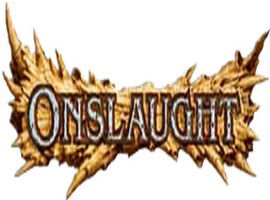
Onslaught, part of the last block that would take place on Dominaria for a few years, changed Magic forever by bringing to the world a cycle that would impact eternal formats forever: Fetch Lands.

Designed to be efficient manafixing that interacted with graveyard-oriented abilities, especially Threshold from the previous block, Fetch Lands entirely changed the way we've played Magic through their interaction with basic land types, which allowed to fetch Dual Lands with them, significantly improving Legacy's mana flexibility, and later this would be reflected in the now-defunct Extended and Modern with the Shock Lands.
Fetch Lands are by far the most important land cycle in Magic history, as they set a new bar for how to upgrade your manabases whenever they are available in a format, making the option to play three or more colors way more tangible than before its existence.
And, precisely because it facilitates access to colors and reduces diversity, this cycle is currently banned from Pioneer since the format's launch.
2001 - Apocalypse
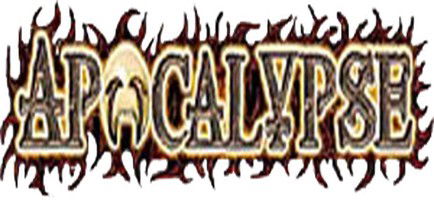
Apocalypse was the set that, through its lore, ended the greatest saga of Magic: The Gathering, putting an end to the story of the Phyrexian Invasion on Dominaria, with the death of the villain Yawgmoth through the sacrifice of several important characters, like Urza and Gerrard, and I consider it the most important release of 2001 for representing the end of the most famous arc in the game.

In addition, even though many of them became obsolete due to Power Creep, Apocalypse was crucial to the game's competitive universe, with Pernicious Deed being considered, for years, as one of the best sweepers of all time. and, alongside Spiritmonger and Phyrexian Arena, having established in Extended a famous archetype, The Rock.
2000 - Invasion
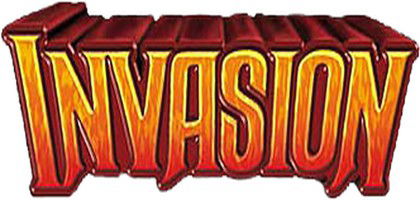
Starting a block and in a relatively weak year of releases, Invasion deserves its spot on this list because, among 2000s sets, it has the most cards that have stood the test of time and, by chance, still are present in the competitive scenario.

With recent reprints, Absorb and Opt have become legal on Pioneer, where they are staples in archetypes like Azorius Control and Izzet Phoenix, while Sterling Grove is still important to Enchantress decks, and Phyrexian Altar is one of Commander's most played combo pieces.

The set was also essential to the constructed of its time, with Fires of Yavimaya being the mainstay of one of the most famous decks of the time, while Addle and Urza's Rage were seen as staples for Machine Head, piloted by Tom van de Logt to win the 2001 World Championship.
1999 - Urza's Destiny

Urza's block was a historic moment for the game in the most controversial ways possible, regarded as the most broken block of all time due to the high-power level of its cards at a time when R&D was still experimenting — and Urza's Destiny, despite being the least controversial of the three sets, is still the one with the biggest historic impact on the game in its year.

Phyrexian Negator was one of the most famous cards of its time, and it retained its historic appeal for years in Extended and Legacy until more efficient options like Tarmogoyf existed.
Yawgmoth's Bargain, despite being seen as a "fixed" version of Necropotence, turned out to be as broken as or even more powerful than Ice Age's enchantment for putting the cards in its owner's hand, being banned from Legacy and also from Commander.
Speaking of Commander, Thran Dynamo is still a famous card in the format, as it starred in important archetypes of its time, such as Wildfire, and alongside Metalworker and Masticore, would star in the deck that would lead Jon Finkel to become World Champion the following year.
1998 - Urza's Saga

To say that Urza's Saga was the most important set of its year is practically an understatement: The set that opened Urza's Block is seen as the most broken Magic set ever released, being a benchmark for a variety of things R&D would avoid for years to come.

The first important lesson Urza's Saga taught is that free mana is easy to break*, as demonstrated with Tolarian Academy and its cycle, which also includes the world-famous Gaea's Cradle, and a variety of spells that performed an effect while untapping a number of lands equal to their cost.
Many players call Tolarian Academy "the most powerful land in the game", but Urza's Saga also brought what many consider the most powerful spell in the game.

Yawgmoth's Will, or Yawg-Win as it's called since you'll usually win the game on the turn you cast it, is an essential piece for a multitude of combos, being banned in Legacy for being too powerful.

It also features a massive amount of cards that have been, or have become, long-term staples, with Duress being for nearly a decade the best discard spell in the game.
Because of its history, its worldwide fame as the most broken set of all time, and for bringing to the game's R&D a variety of examples and learnings about the limits of Magic's power level, Urza's Saga was the most important set from 1998.
1997 - Tempest

Tempest brought to the game some cards that made history and/or are still important for the competitive and casual world.

While Cursed Scroll was played for a decade and became obsolete years later, Wasteland is one of the pillars that sustains Legacy today and prevents archetypes from running too greedy manabases with four or five color lists, basically operating as the format's fun police.
For these historic additions, Tempest is the most important set of 1997.
1996 - Alliances
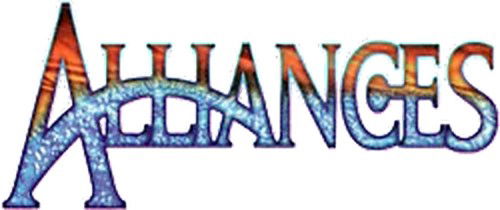
1996 wasn't the most exciting year for Magic in a release and story context, so just like the year after, we need to assess the practical impact sets had on the game's history, and how its cards were or still are present in the game.

Force of Will, considered by many to be the pillar that sustains the viability of fair decks in Legacy, came out as part of the first "free spells" cycle to exist in the game, in Alliances.
Both for introducing such an important piece to the competitive world and for pioneering the design of playing spells without paying mana costs, the second set of the Ice Age block deserves the most impactful set title for 1996.
1995 - Chronicles

Chronicles was a reprint set released in 1995 to facilitate the acquisition of certain cards by increasing their availability on the market, and was the first one entirely focused on reprints outside the core sets.
However, what makes it so important is how its negative repercussion was because, despite Wizards having left out some more expensive cards, certain reprints such as the Elder Dragons have lowered their price, making collectors upset.
This controversy later led to the creation of one of the game's biggest controversies — the Reserved List.
1994 - Legends

Legends was one of the first expansions for Magic: The Gathering, and it brought two very important points to the game's development: Legendary Permanents and Multicolored Spells, in addition to introducing some of the iconic characters from the lore that would eventually develop, including one of the most iconic villains in the game — Nicol Bolas.

A small curiosity about this set is that, in the past, all legendary cards were restricted for flavor reasons: it shouldn't be possible to have more than one copy of it in the deck if it's... well, legendary. This rule was changed when Ice Age came out, in 1995.

Legends also has a fair number of iconic and staple cards that still see play in Commander and Legacy, including Chains of Mephistopheles, one of the most difficult-to-understand cards in the game.
1993 - Alpha
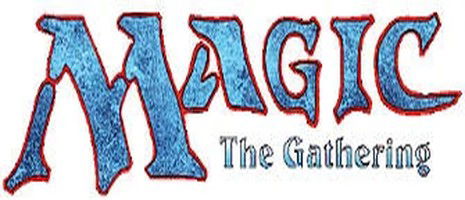
As cliché as this sounds, Alpha is definitely the most important set of Magic's first year because it was the one that brought the game to life. Nothing would be what it is today if Alpha hadn't been a success.

Alpha, in addition to being the origin of the game, was also the set that brought the famous Power 9, considered the most powerful spells in the game, as well as the Old Duals, lands that are the pillars of Legacy's manabase.

But it's not just expensive and/or broken cards that the first set lives on: some of the spells we often run today first came out there, such as Lightning Bolt, Dark Ritual and Counterspell.

Conclusion
That's all for today.
Magic reaches its 30th birthday with a huge load of content, learnings and changes over the years, and its releases accompanied each of these moments, as did players who had the opportunity to try cards from recent and old releases.
Thanks for reading!

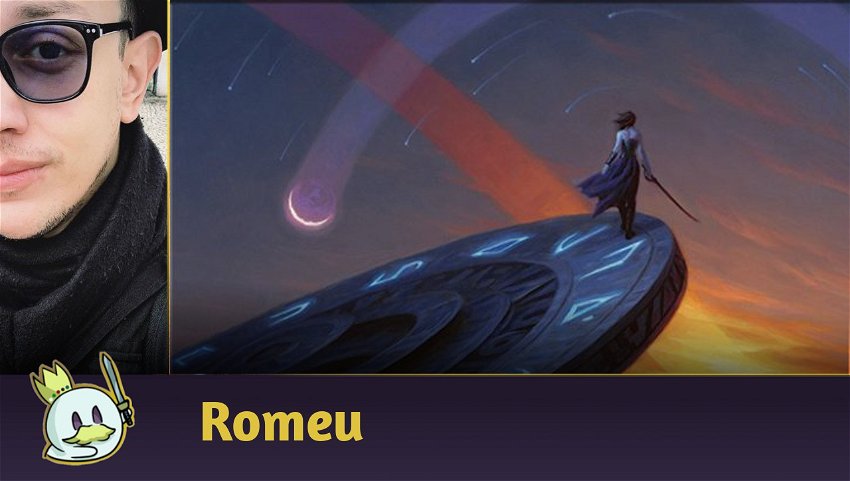






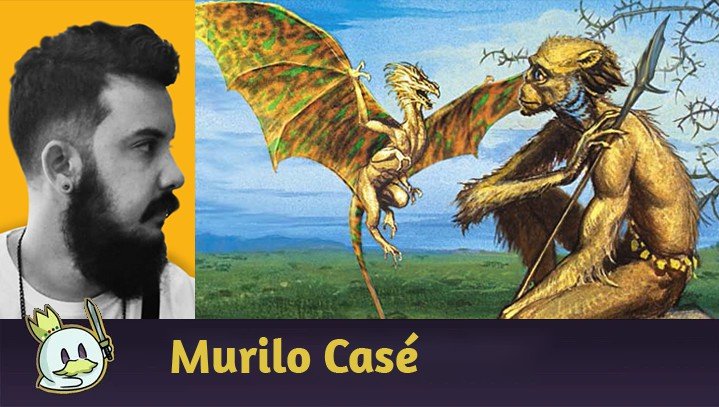
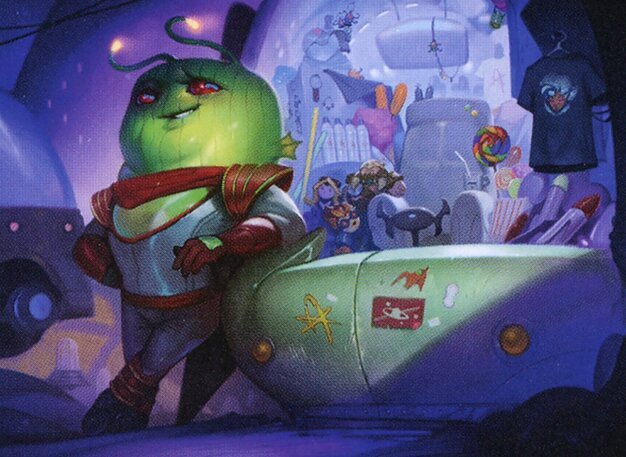



— 评论 0
, 反应 1
成为第一个发表评论的人